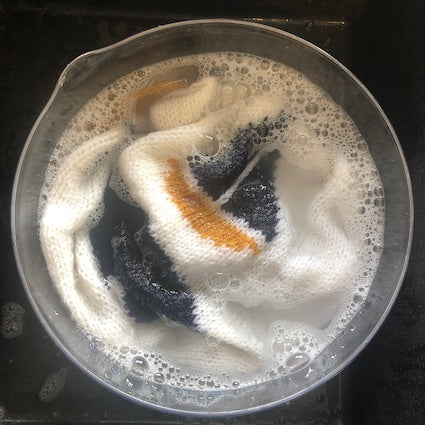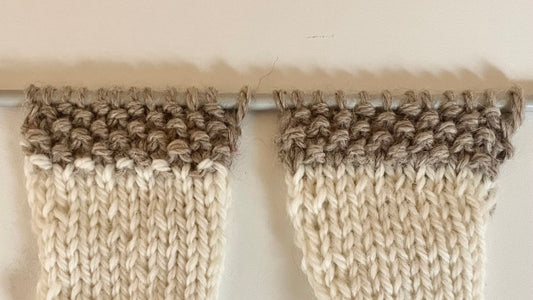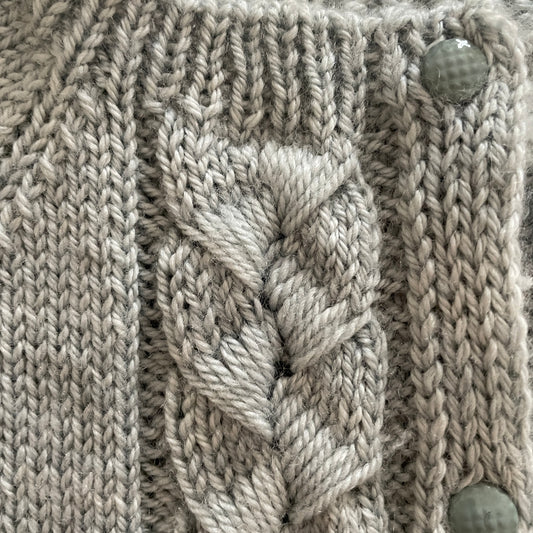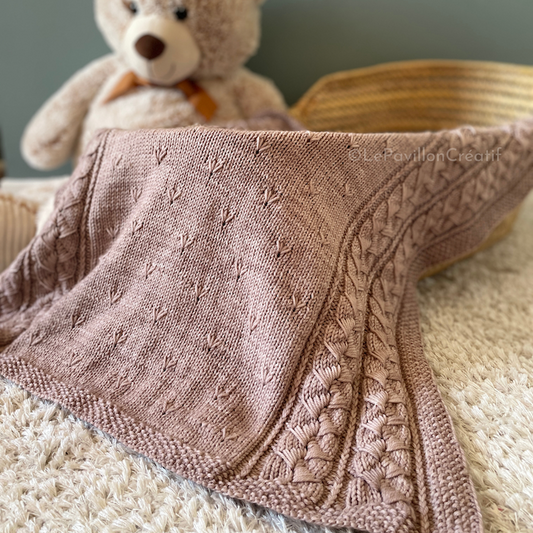I see a lot of nice blankets and notice that some are not blocked. I will therefore give you some explanations on this method which I consider essential for a better finish.
Blocking consists of giving the final shape of your work
By blocking your blanket, you give it a very rectangular and flat shape. Here is a little before / after blocking:


After blocking
How to block your work? Here's the procedure to follow :
In contact with water, your wool will relax, the fiber will smooth out and will make almost all the imperfections of your work disappear and will standardize the stitches between them. It will also bring out your patterns and harmonize the whole blanket and even more if you use the jacquard method.
1. Soak your work for about 15 minutes in cold water
(this prevents the wool from bleeding, so avoid hot water!!!) . Use a special detergent for wool. Personally, I use Mir Laine and if you use hand-dyed wools (which tend to bleed a little bit unlike store-bought wools), Grandma's advice is to add a few drops of white vinegar .

.
2. Always rinse with cold water and gently wring your work pressing it lightly between your hands. Avoid twisting so as not to break the fibers .

3. Wrap your work between 2 terry towels and roll it all up to create a sausage and press it to absorb as much water as possible.




WARNING :
NEVER PASS YOUR IRON ON A WOOLEN WORK ! An iron creates heat, even at very low temperatures. By passing your iron over the wool, you will crush the stitches and burn/break them. Wool hates temperature changes!
If you have to sew a fabric on the wrong side , remember to wash and iron it before sewing it. If you must wash your blanket with its lining, wash it by hand and flatten the blanket well on a flat surface but never iron your fabric with your blanket underneath. In general, I recommend sewing a "fleece" or "double gauze" type fabric, which does not necessarily require ironing.




